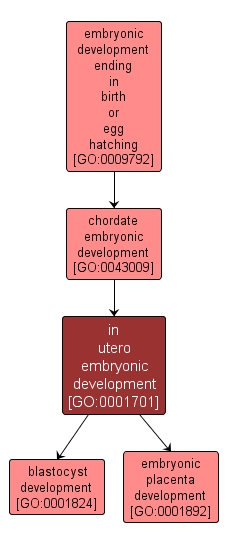GO TERM SUMMARY
|
| Name: |
in utero embryonic development |
| Acc: |
GO:0001701 |
| Aspect: |
Biological Process |
| Desc: |
The process whose specific outcome is the progression of the embryo in the uterus over time, from formation of the zygote in the oviduct, to birth. An example of this process is found in Mus musculus. |
|

|
INTERACTIVE GO GRAPH
|














